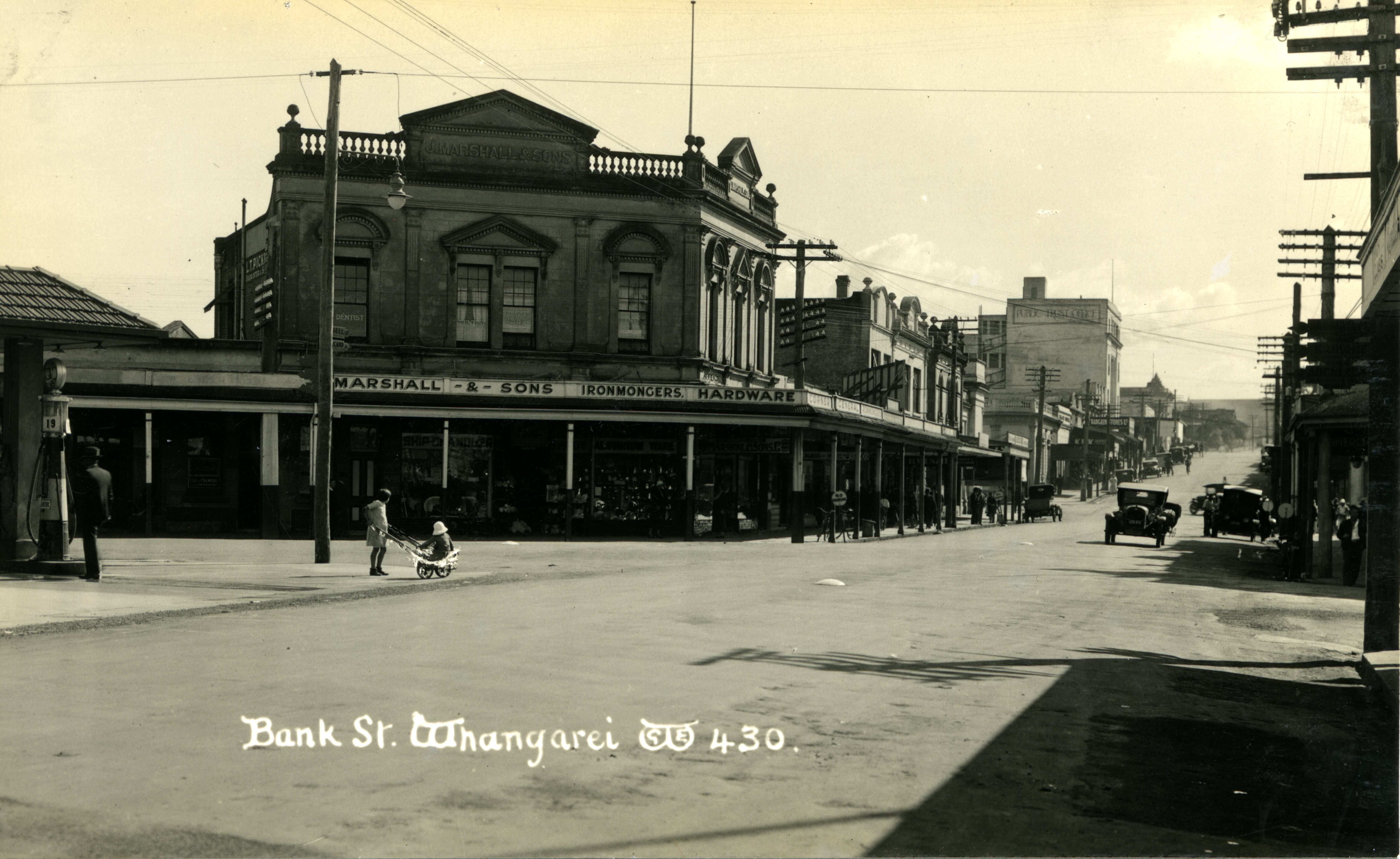One of the few buildings in our town centre that retains the style of Whangarei’s heritage is on the corner of Cameron and Walter Streets. Now done up in a soft green accented by cream and dark green detailing, the current building appears in identical state to the original. The only element missing is a decorative header made up of finials and a plaque advertising the original business - J. Marshall & Sons. James Marshall and his son G. C. Marshall left Thames for Whangarei in 1892. James had run a drapery shop in Parawai, the southern part of Thames village, North Island New Zealand. The family brought his skills with them to found a general store in central Whangarei the year after moving north.

Marshall & Sons offered several departments. Their drapery and millinery department offered stock like straw hats, muslin fabrics, rugs, shoes and summer dresses. Their grocery department included hams, fruit, pickles, Liptons tea, dairy and equipment like mason jars, jelly cans, enamelled preserving pans and apple peelers. In 1898 they extended the building to join their drapery and crockery departments. An advantage of his wide ranging stock is to offer many things which Northlanders would have previously bought from Auckland shops. Therefore he brought greater commerce to Whangarei Town and reduced the reliance on Auckland markets. This further had an effect of lowering the prices of shops in Whangarei to gain competitive advantage over each other and again Auckland. With steam boats travelling nearly everyday to and from Auckland at the turn of the century the cost of importing goods was much lowered. Due to such a rapid go between these places in 1893, Whangarei was even remarked to be a “suburb of Auckland”. His competition in town included Harrison’s general store, Clement and Bentley Chemists and Stationers, Chissell’s toys and nick-knacks, McGregor’s draper and milliners, McMasters and Shalder’s general store, not to mention Farmers and Drummonds general stores. Other choice offerings included crockery, wire nettings, seeds, toys, china ware and tin ware which can be seen glimmering in the shop window, captured in photo. This photo is one of my latest favourites in the archives of Whangarei Museum as it is very clear in quality and depicts two young girls, one pushing the other in a pram, stopped on the corner of Bank, Water and Rose Streets. At that time there were evidently several petrol pumps, but the girls’ attentions are caught on the shops across the road, with a lady standing out front, probably (and hopefully) their mother. The cars and fashions suggest this photo to have captured Marshall Sons in the late 1920s. By this time the Marshalls had expanded into offering more ironmongery and tools and advertised as “the hardware corner”. Not only did G. Marshall run such a key business in central Whangarei but he contributed largely to his community. Throughout his life he had been a member of the Whangarei Fire Brigade, the first Whangarei Rotary Club and on the Whangarei Chamber of Commerce. The firm Marshall and Sons regularly donated Christmas gifts to the hospital, such as crates of oranges.
Not too long after this photo was taken, Marshall’s corner was rearranged. The façade was altered, likely into what we see today, and H. G. Appleton opened his butchers shop on the western corner. G.C. Marshall died in 1939 at the age of 65 from a short illness and it appears that his firm also closed around this time. The grandeur of the building we keep today highlights the importance of this shop not only in contributing to the architectural style of town but in setting foundations for Whangarei to become the hub of Northland.